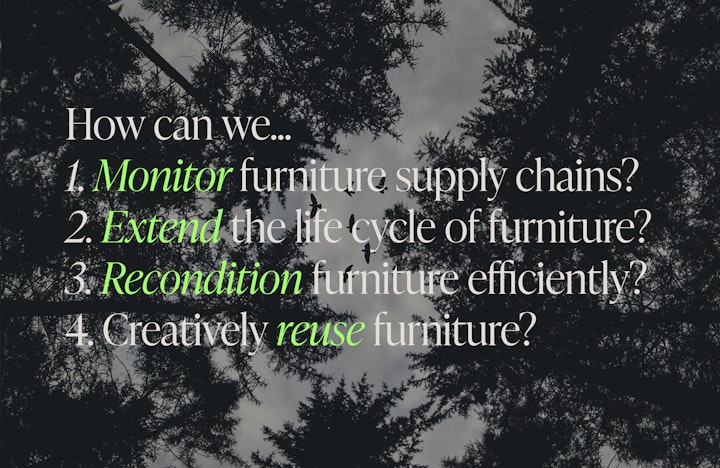The industry that enables people to select, source, buy and use furniture globally creates an abhorrent level of waste.
Reports suggest that the average piece of furniture has 47 kilograms of embodied carbon. This is roughly the same amount of greenhouse gasses produced by burning around 5.3 gallons of petrol. Sofas are the biggest problem with 90 kilograms of embodied carbon, with foams and fillings making up more than 40% of this number.
So far this year over 10 million hectares of forest have been cut down or burnt to accommodate the demand and it's only May. By comparison, the UK has a landmass of 24 million hectares.
At the end of life, in Europe between 80% and 90% of furniture is incinerated or sent to landfill, with only approximately 10% recycled.
The greater problem is that this industry is a machine. Globally it is a $500 billion industry that is expected to grow to $650 billion by 2027. This means that many millions of people globally are reliant on the destructive status quo of this industry so change is going to be resisted.
Retailers, furniture dealers, procurement companies, logistics companies, furniture manufacturers and their supply chains are all reliant on this relentless demand for furniture consumption and disposal to continue to grow.
No one is going to ask to have this livelihood taken away. One anecdote of the UK Head Of Sales for a globally recognised furniture brand calling one of their biggest corporate clients to complain that they were considering sourcing reconditioned furniture instead of honouring their global agreement tells you all you need to know.
To tear down the walls of this system there must be an ecosystem of companies that can service the global requirement for furniture in a substantially less harmful way. Humans need things to sit on and put stuff on. This must be a value chain of companies creating furniture that stops as much furniture as possible from going in the bin.
A series of companies that can contribute to the below is essential:
- Monitoring where the existing furniture is being used so that a secondary market can work efficiently
- Extend the life cycle of furniture
- Recondition furniture to give it multiple life cycles
- Creative reuse (upcycling) of any waste from the system
In debating these challenges we are designing a concept furniture brand of the future. A furniture system designed to transcend time. This brand is called ‘Capxule’. Please share, comment and DM. We look forward to driving impactful change.

